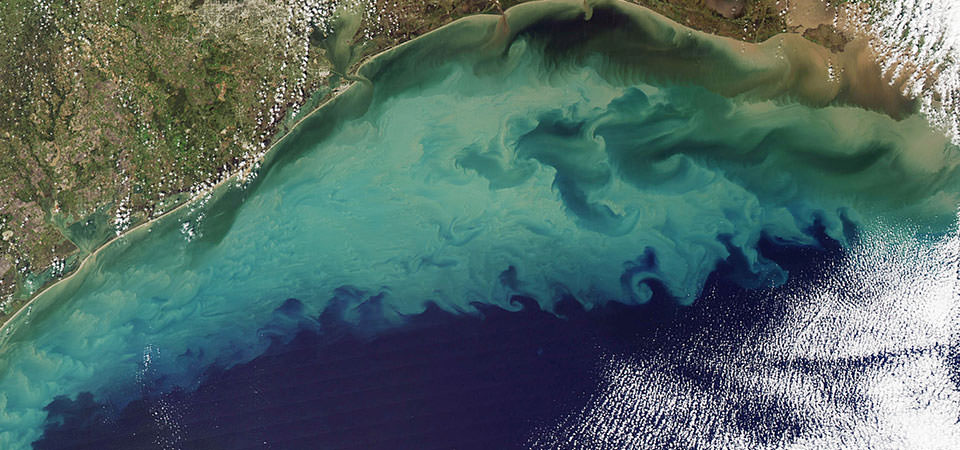Hypoxia
Ocean Shorts: Episode 10
June 18, 2015

Hypoxia = Lack of Oxygen
In some cases, vast stretches of open water become hypoxic. Unable to sustain life, these areas, called dead zones, may cause die-offs of fish, shellfish, corals, and aquatic plants. Shown here: a 2009 harmful algal bloom in the Gulf of Mexico. Excess nutrients in the water (primarily nitrogen and phosphorus) often leads to large algal blooms. When algal blooms die or are eaten by zooplankton, the bacteria that decomposes this organic matter lowers oxygen levels, which can lead to hypoxic water conditions.
Transcript
HOST: Welcome to Ocean Shorts where we revisit segments from our past Making Waves and Diving Deeper podcast episodes. Today, we’ll hear a bit about the problem of hypoxia. In this 2010 interview, I was joined by Dr. Libby Jewett. At the time of this podcast, Libby was NOAA’s hypoxia research program manager. Today, she is the director of NOAA’s ocean acidification program. Let’s listen in.
LIBBY JEWETT: “Hypoxia is when the level of dissolved oxygen in the water gets too low to support most life and it’s a problem in coastal waters around the U.S. and in lakes. It’s been defined as when the level of oxygen falls below two parts per thousand or two milligrams per liter…”
HOST: And the biggest factor that leads to dissolved oxygen falling below this level is what’s known as nutrient pollution. We generally think of nutrients as good things because all organisms need nutrients to grow. The problem is that we humans are generating way too many of them. And these nutrients – mainly nitrogen and phosphorus – find their way into our waterways and end up in lakes, estuaries, and coastal waters. Libby said that in most cases these excess nutrients are the main culprit behind the hypoxia problem. What happens is that the nutrients become food for algae in the water, and this leads to unnaturally large algal blooms. In other words, it makes the algae grow like crazy, just like fertilizer boosts the growth of the grass on your lawn. And then …
LIBBY JEWETT: “As that algal bloom dies or is eaten by zooplankton, the organic matter falls down to the bottom waters and because the bottom waters are actually separated by the surface waters because they’re – in the case of an estuary – higher salinity, denser waters – as the bacteria is decomposing that organic matter in the bottom waters – it actually draws the oxygen level down. And so it’s through the nutrient supply of these systems that we actually see a growth in the frequency and intensity of hypoxia in many U.S. systems.”
HOST: That's all for today's Ocean Shorts. Thanks for joining us! For more about the problem of hypoxia and to listen to this full episode, head over to oceanservice.noaa.gov/podcast/.
